This globular porcelain teapot was made in China for export, possibly for the French market, during the last quarter of the Qianlong period (1711-1799.) It measures nearly 5.5 inches high and is 8.75 inches wide from handle to spout. The delicate armorial decoration on each side consists of a gilt monogram (JEM) suspended from a shield surrounded by floral garlands and ribbons. The chipped lid has a peach shaped knob and is decorated with flowers.
It appears that on more than one occasion over the past 200+ years, this fragile teapot was rushed to surgery. The multiple repairs include a silver plated replacement spout with scalloped backplate, an iron replacement handle with a pleasing green patina, and 2 metal staples securing cracks on the body. Every surface of this noble survivor bears scars, which to me, makes it even more attractive and unique.
Tags: Chinese, globular, metal handle, metal spout, porcelain, staples/rivets
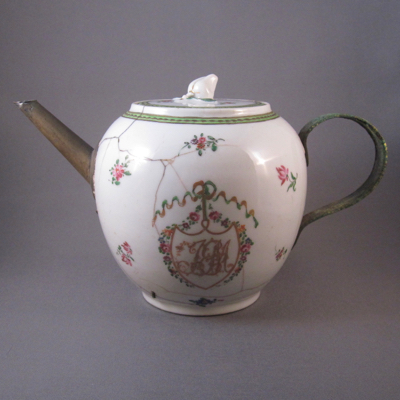

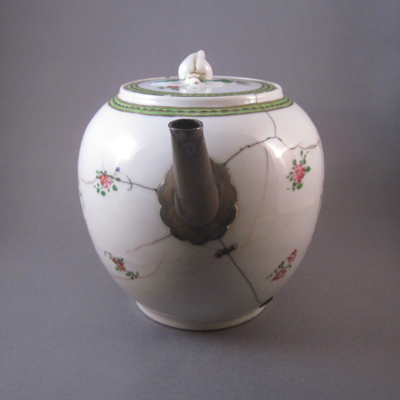
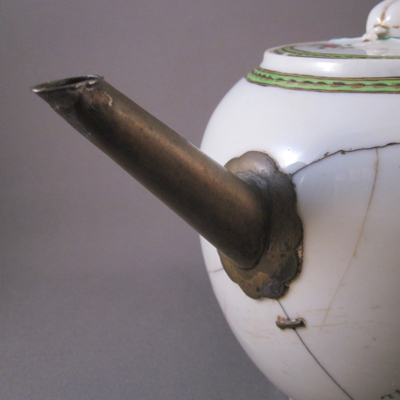

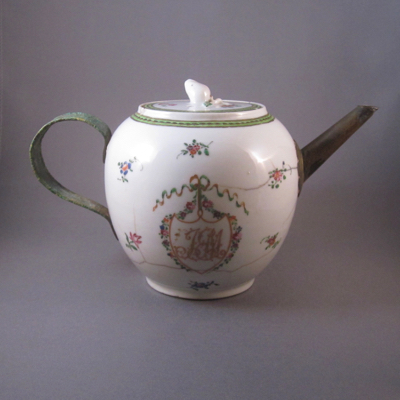

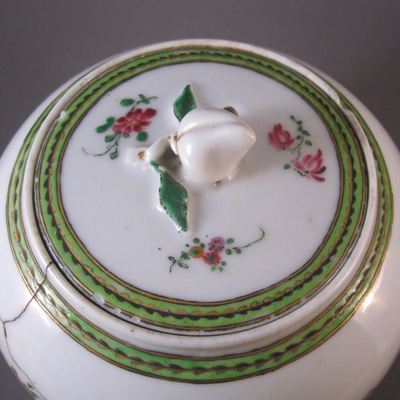
Andrew, how are the “new” handle and spout attached to the body of the teapot?
The handle is bolted on through holes drilled through the body. The spout is attached by crimping the ends of the replacement spout to the hole where the original spout was. A large percent of replacement handles and spouts were attached using these methods.